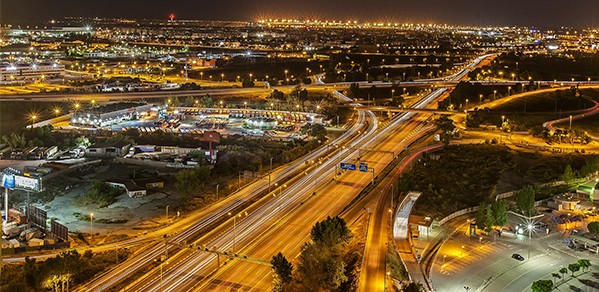
Researchers from Cambridge’s Construction Information Technology (CIT) Laboratory will lead on the digitalisation of the European road network as part of a collaborative project to improve road safety, increase capacity and reduce maintenance costs.
Our goal is to set the foundations for generating, updating, and exploiting Digital Twins for road network maintenance and operations management.
Dr Ioannis Brilakis
The CIT Laboratory, which is part of the Laing O’Rourke Centre for Construction Engineering and Technology at the University of Cambridge, will join a consortium of 16 partners from seven EU countries to work on the €5 million project titled OMICRON, funded by Horizon 2020, the EU research and innovation programme.
With a particular focus on road Digital Twins, the objective of OMICRON is to develop an Intelligent Road Asset Management Platform to address the needs of road design, construction and maintenance processes, unifying and coordinating innovative technologies from robotics to digitalisation tools. A Digital Twin is a detailed digital copy of physical real-world infrastructure used for intelligent decision-making, informed by different sources of inspection data, across the entire lifecycle. In this case, the Digital Twin will focus on the entire road network system including pavements, bridges, tunnels, signalling, safety systems and lighting.
Dr Ioannis Brilakis, Laing O'Rourke Reader in Construction Engineering and Director of the CIT Laboratory, and his team, have made pioneering scientific accomplishments in ‘twinning’ infrastructure scenes. They will now take the lead on the design and integration of a road Digital Twin and intelligent decision support system (DSS) as part of the OMICRON project. This will enable the automation and optimised maintenance of a number of road management tasks that currently still have a high labour component.
The CIT Laboratory will also take the lead on enhancing vehicle inspection technologies in a bid to capture better visual information of the condition of road infrastructures – a procedure normally carried out manually, supported by specific machinery, which is very costly and has limited precision.
The task will involve the spatial projection of thermal data for visual inspection and will use computer vision-based algorithms in order to process the data captured by the system. The task will involve combining information (e.g. high-quality images) gathered by unmanned aerial vehicles (UAVs) – such as that of bridges and signalling that cannot be captured easily from the ground – with information gathered by ground vehicles – of the pavement and surrounding road area, for example – and integrating it in the Digital Twin.
Dr Brilakis said: “Our goal is to set the foundations for generating, updating, and exploiting Digital Twins for road network maintenance and operations management. This refers to detailed, object oriented Digital Twins that capture both the 'as is' spatial and visual properties of road assets and interpret them in a manner appropriate for its intended use.”

